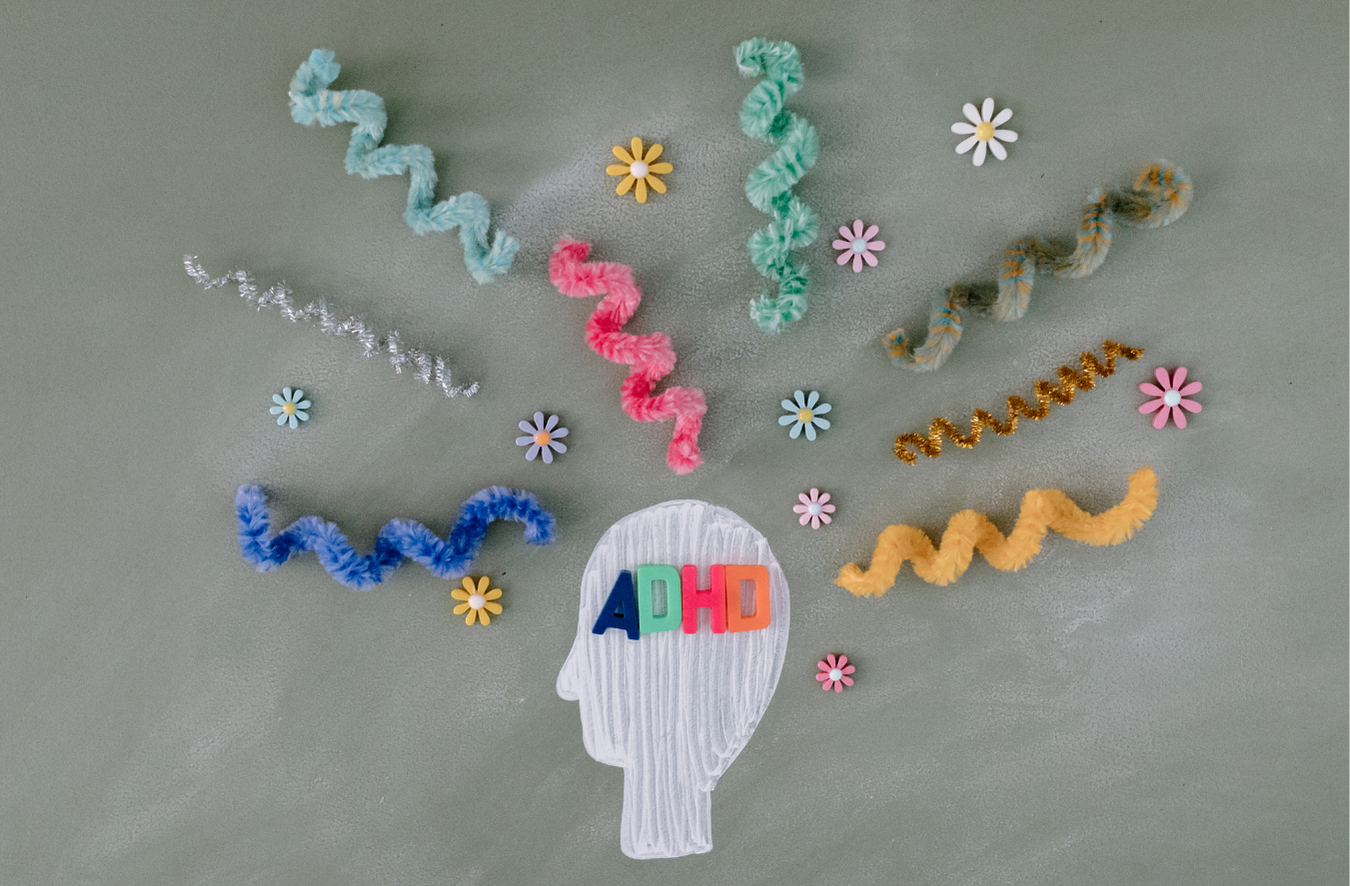Neuroplasticity: How the Brain Heals, Learns, and Adapts
Key Takeaways:
- The brain can change at any age through learning, experience, and recovery.
- Neuroplasticity supports healing after injuries like stroke or trauma.
- Daily habits—like exercise, sleep, and mindfulness—enhance brain adaptability.
- Negative patterns, such as addiction, also reshape the brain through plasticity.
- Therapies and targeted
practices can help rewire unhelpful neural pathways.
The human brain has long been considered one of the most complex organs in the body, and only in recent decades have we begun to truly understand its remarkable ability to adapt and change. This capacity, known as neuroplasticity, refers to the brain’s ability to reorganize itself—both in structure and function—throughout life.
Interest in neuroplasticity has surged not only in scientific communities but also among individuals seeking to improve memory Neurodegeneration, recover from injury, or manage mental health. As research continues to evolve, so does public curiosity.
But along with rising interest come common misconceptions: some believe brain adaptability only happens in childhood, while others think it's a quick fix for any cognitive issue. This article aims to clarify what neuroplasticity is, how it works, and what it means for learning, healing, and everyday life.
What Is Neuroplasticity?
Neuroplasticity is the brain’s ability to form new neural connections or modify existing ones in response to experience, learning, or injury. It’s the reason people can recover after a stroke, learn a second language, or improve motor skills through practice.
Rather than being a rigid structure, the brain is more like a dynamic system—constantly updating itself based on what we do, feel, and think.
A Brief History of the Concept
The term "plasticity" was first introduced in the late 19th century, but it wasn’t until the mid-20th century that neuroscience began to accept that the adult brain could continue changing.
Before then, the prevailing belief was that brain development halted after childhood. This shifted as brain imaging and clinical research began to show evidence of ongoing adaptability well into adulthood.
Does Neuroplasticity Really Work?
Yes—and there’s strong evidence to support it. Real-life examples are backed by imaging studies showing physical and functional changes in the brain over time.
Stroke Recovery Supported By Brain Rewiring
A 2023 fMRI study followed 15 first-stroke patients over 6 months, with five scans per patient. It found that patients who showed strong motor recovery also had significantly enhanced functional recruitment in intact brain networks—by looking at patterns of brain activity, researchers could predict who would recover — and they were right nearly 86% of the time.
Additionally, resting state fMRI (a type of brain scan taken while a person is not doing any specific task) showed improved interhemispheric functional connectivity in the motor cortex — meaning the two sides of the brain’s movement center were working together more smoothly.
This improved coordination between brain hemispheres was linked to patients regaining physical function after therapy.
London Taxi Drivers Hippocampal Remodeling
In one classic study, 39 trainee cabbies underwent MRI scans before and after “The Knowledge” test — an intensive memorization of 25,000 streets and landmarks. The results showed that trainees who successfully passed the exam showed increased grey matter in the posterior hippocampus, the region linked to spatial memory.
Control groups and those who failed did not show these changes. This striking structural change proves that even in adulthood, specialized learning can physically reshape brain regions.
Musicians With Fine-Tuned Brain Anatomy
A study published in Nature Reviews Neuroscience found that musical training physically reshapes the brain, particularly in regions involved in hearing, movement, and coordination.
Starting young leads to more pronounced and lasting changes — even just 20 minutes of practice can trigger neural shifts. Musicians detect subtle sound differences others miss, and their brains devote more space to skilled body parts like the fingering hand.
Trauma And Therapy To Prefrontal–Amygdala Changes
Neuroimaging reviews show that trauma-focused psychotherapy (e.g. CBT or exposure therapy) induces measurable brain changes:
- Altered patterns of prefrontal cortex activation, linked to improved regulation of fear or PTSD responses.
- Pilot ketamine + exposure therapy in PTSD patients produced structural and functional changes during trauma memory reconsolidation.
- Functional neurofeedback in PTSD veterans (n=20) targeting left amygdala led to significant reduction in PTSD (Clinician-Administered PTSD Scale) scores (80% responded vs 38% with sham)
In simple terms? Healing from trauma doesn’t just change how you feel—it can literally change how your brain works. The right kind of therapy can help rewire the circuits that keep fear and distress stuck on repeat.
How Neuroplasticity Works
At the core of neuroplasticity is the concept of neurons communicating and reorganizing. This happens through synaptic plasticity, where neurons form new connections or strengthen existing ones based on use. Learning, practicing, or adapting to change all influence how these synapses behave.
Cortical Remapping
In some cases, particularly following injury, the brain can reassign tasks to different regions—a process called cortical remapping.
For example, if one part of the brain is damaged, another area may take over its functions to compensate. This adaptability is a fundamental reason why rehabilitation is possible.
How Long Does It Take to Rewire the Brain?
There’s no one-size-fits-all answer. Simple changes, like practicing a new skill, can create measurable changes within a few weeks. More complex changes, such as those involved in recovery from injury or trauma, may take months or longer.
1. Timeframe of neuroplasticity
- Short-term plasticity: Seconds to minutes (e.g., temporary changes in synaptic strength)
- Long-term plasticity: Hours to years (e.g., learning, recovery after stroke, trauma adaptation)
2. Context of change
- Motor learning: Structural brain changes (like new connections in the motor cortex) can emerge after 2–4 weeks of consistent practice.
- Meditation: Studies show gray matter thickening in the hippocampus and prefrontal cortex after just 8 weeks of mindfulness training (e.g., Hölzel et al., 2011).
- Stroke recovery: Functional neuroplasticity (via fMRI) is observed as early as days to weeks, but long-term rewiring can span months to years, depending on severity and rehabilitation.
- Language learning: fMRI and DTI studies show white matter and hippocampal changes after 3 months of immersive learning.
3. Measurement tools
- fMRI (functional MRI) – reveals changes in brain activation patterns over time.
- DTI (diffusion tensor imaging) – tracks white matter remodeling (connectivity between regions).
- EEG & MEG – can detect shifts in brain wave patterns within days to weeks.
- MRI morphometry – measures physical growth or shrinkage in brain regions over weeks to months.
Consistency, repetition, emotional relevance, and quality of effort all play a role in how quickly neuroplastic changes occur. While timelines vary, the encouraging truth is that change is always possible—with time and the right conditions.
Types of Neuroplasticity
Neuroplasticity can be categorized into two primary types: functional and structural. Both forms are essential for the brain’s ability to adapt, though they operate in different ways.
Functional Plasticity: Functional plasticity is the brain’s ability to shift functions from damaged areas to undamaged ones. For example, if a stroke affects a region involved in language, another part of the brain may take over that function. This ability is particularly relevant in rehabilitation settings, where patients work to recover lost capabilities through therapy and repetition.
Everyday Examples of Functional Plasticity:
- Relearning how to walk after a stroke
- Regaining speech through therapy after a brain injury
- Using your non-dominant hand when the dominant one is injured
- Adapting to vision loss by developing heightened auditory processing
- Bilingual individuals switching language centers depending on the language spoken
Structural Plasticity: Structural plasticity involves physical changes in the brain’s architecture. This includes the growth of new connections between neurons and, in some cases, the creation of entirely new neurons. Structural plasticity is frequently associated with learning, where repeated practice leads to lasting changes in brain structure.
Everyday Examples of Structural Plasticity:
- Learning to play a musical instrument
- Acquiring a new language
- Developing coding or technical skills at work
- Practicing meditation and mindfulness (linked to growth in the hippocampus and prefrontal cortex)
- Memorizing complex routines like dance choreography or sports plays
Neuroplasticity vs. Neurogenesis
Neurogenesis is a term you will often hear when discussing neuroplasticity; and are even used interchangeably at times. However, they describe different—yet occasionally overlapping—processes.
Neuroplasticity refers to the brain’s ability to rewire itself, while neurogenesis involves the creation of new neurons.
Understanding their distinctions is important because many discussions about brain change, healing, and learning touch on both concepts.
For example, when asking if adults can "grow" new brain cells after injury or through meditation, we're really asking whether neurogenesis plays a role—or whether neuroplasticity alone is at work. Clarifying the difference helps us better understand what kinds of brain change are actually possible at various stages of life.
| Feature | Neuroplasticity | Neurogenesis |
|---|---|---|
| Definition | Brain’s ability to reorganize neural connections | Formation of new neurons |
| Occurs in Adults? | Yes, across many regions of the brain | Yes, but primarily in the hippocampus |
| Main Functions | Learning, memory, adaptation | Memory, mood regulation, learning |
| Triggered by | Experience, learning, injury, therapy | Physical exercise, enriched environments |
| Speed of Process | Can occur rapidly with repetition and focus | Slower and localized |
| Can Aid Recovery? | Yes, significantly | Potentially, depending on condition |
Benefits of Neuroplasticity
The practical value of neuroplasticity lies in its contributions to how we learn, recover, and adapt. These benefits are evident in both everyday growth and clinical rehabilitation.
Learning and Skill Acquisition
Whether it’s acquiring a new language, playing a sport, or solving complex problems, learning activates and strengthens neural connections. With repeated effort, the brain becomes more efficient at specific tasks, resulting in improved performance over time.
Example: Learning a second language can lead to a stronger and more resilient brain, along with physical changes in brain structure. These benefits are thought to be why bilingual individuals often experience enhanced cognitive abilities.
Memory Formation
Memory is closely tied to synaptic changes. Each time we recall a fact or revisit a task, we reinforce the neural pathway responsible for that information. Neuroplasticity allows these pathways to form, grow, and become more efficient with use.
Example: Older adults who received tactile stimulation therapy regained sensory discrimination abilities equivalent to those 30 years younger, demonstrating plasticity in memory-related neural circuits.
Recovery and Adaptation
After brain injury or neurological trauma, neuroplasticity supports healing by enabling unaffected areas to compensate. Stroke survivors relearning motor control, for example, often rely on intensive therapy designed to encourage plasticity.
Example: Stroke patients showed increased motor cortex activation and improved limb use after undergoing rehabilitation, confirmed via fMRI.
Traumatic Brain Injury Rehabilitation
In TBI cases, where impact disrupts brain function, recovery is often unpredictable. Still, targeted interventions can promote healing. Techniques include task-specific training, visual and motor exercises, and even virtual reality tools to retrain coordination and perception.
Example: TBI patients using virtual reality rehabilitation improved in motor function, attention, and daily activities more than those receiving traditional therapy.
Reducing Brain Fog
“Brain fog” is a common complaint among individuals with chronic stress, illness, or mental fatigue. It typically involves reduced clarity, poor memory, and lack of focus.
While it’s not a medical diagnosis, it may be linked to disrupted neural communication. Improving sleep, reducing stress, regular exercise, and mental stimulation can help restore more effective brain function over time—essentially using neuroplasticity to clear the mental haze.
Factors That Influence Neuroplasticity
Not everyone experiences neuroplasticity in the same way. Several internal and external factors can shape how adaptable the brain is over time.
- Age and Development: Children experience heightened plasticity during key developmental windows (e.g., for language and motor skills). While plasticity declines with age, it remains active throughout life—though older adults may require more repetition and effort.
- Environment and Experience: Exposure to new ideas, challenges, and social interactions promotes learning and neural flexibility. Mentally active environments help maintain cognitive health.
- Emotional and Cognitive States: Positive moods, focus, and psychological safety support brain change, while chronic stress can disrupt it. That said, managed stress—through therapy, journaling, or physical activity—can drive growth and resilience.
- Physical Activity: Aerobic exercise (e.g., walking, swimming) increases brain-derived neurotrophic factor (BDNF), which supports neuron growth.
- Sleep, Nutrition, and Hydration: Quality sleep helps consolidate memory and repair neural pathways. A diet rich in omega-3s, antioxidants, and proper hydration fuels healthy brain function.
- Mindfulness, Meditation, and Play: These practices enhance attention, emotional regulation, and creative thinking. Even unstructured play can stimulate cognitive flexibility and new neural connections.
Does Neuroplasticity Decrease with Age?
Adults of all ages can still create new connections and learn new skills. While plasticity diminishes with age, it doesn’t disappear. Both functional (brain activity changes) and structural (gray/white matter) adaptations remain possible in older adults.
What changes is the rate and ease with which these adaptations occur. Lifestyle choices such as physical activity, mental engagement, and social connection can help sustain and even enhance plasticity later in life.
Neuroplasticity in Education and Learning
The concept of neuroplasticity has deeply influenced how we think about education. It reinforces the idea that learning changes the brain, not just figuratively, but physically and functionally.
Applications in Classroom Settings
Educators increasingly incorporate neuroplasticity principles into teaching strategies. Repetition, spaced learning, and multimodal instruction (combining visual, auditory, and kinesthetic inputs) are all methods that promote durable neural changes.
These approaches help students not just absorb information, but also retain and apply it over time.
Hebbian Learning Explained
The phrase “neurons that fire together, wire together” summarizes the principle of Hebbian learning, one of the cornerstones of neuroplasticity. When two neurons are activated simultaneously, their connection strengthens.
This is the biological foundation behind habits, memory, and skill development. The more often a neural pathway is used, the more efficient it becomes.
Insights from the Einstein Brain Study
One of the most well-known investigations into neuroplasticity and learning comes from the posthumous examination of Albert Einstein’s brain.
Although not without controversy, the study revealed that Einstein’s brain had an unusually dense network of connections in areas related to spatial reasoning and mathematical thought—supporting the idea that intellectual engagement can sculpt the brain’s physical structure.
Neuroplasticity In Rehabilitation And Therapy
Rehabilitation therapies harness neuroplasticity to restore function and improve quality of life after injury or illness. Whether it’s physical recovery or cognitive adaptation, therapy is designed to guide the brain’s rewiring process.
Physiotherapy Applications
In physical therapy, repetitive and goal-directed movement is used to retrain muscles and coordination after injury or neurological events like stroke.
Techniques such as constraint-induced movement therapy encourage the use of affected limbs to stimulate neural change.
Cognitive-Behavioral Therapies (CBT)
CBT is another field that applies neuroplastic principles, particularly in treating anxiety and depression. By helping patients recognize and alter negative thought patterns, CBT encourages the formation of healthier neural circuits.
These mental shifts are not just theoretical—they are supported by imaging studies showing changes in brain activity following therapy.
Chronic Pain and Brain Adaptation
Chronic pain isn't just a physical sensation; it's a neurological state. Over time, the brain may reinforce pain circuits even after the original injury has healed.
Therapies that target these maladaptive pathways—such as mindfulness-based stress reduction or graded motor imagery—work by reshaping how the brain interprets pain signals.
Neuroplasticity in Mental Health
Mental health conditions are increasingly viewed through the lens of neuroplasticity. Disorders like depression, PTSD, and anxiety involve persistent patterns of brain activity that can, in some cases, be altered through therapy, medication, and lifestyle changes.
These conditions often involve overactive stress responses or underactive reward pathways. Interventions like psychotherapy, exercise, and mindfulness can help normalize these patterns by promoting healthier neural pathways.
The changes may not be immediate, but with time and consistency, many individuals report meaningful improvements.
Mechanisms and Limitations of Change
Neuroplasticity is not limitless. Some conditions involve structural damage or genetic components that limit how much change is possible. However, for many people, even modest shifts in brain activity can lead to significant improvements in mood and functioning.
Problems and Ethical Considerations
While neuroplasticity offers many advantages, it’s not always beneficial. The same mechanisms that allow for growth and healing can also reinforce unhelpful or harmful patterns.
Negative Plasticity: Addiction and Chronic Pain
Neuroplasticity doesn't distinguish between “good” and “bad” habits. For instance, substance abuse can rewire the brain to prioritize drug-related cues, strengthening cravings over time.
Similarly, in chronic pain, the brain may amplify pain signals even when the physical injury has healed—essentially training itself to feel pain more persistently.
Limitations of Plasticity
Though plasticity continues throughout life, there are boundaries and limitations. Severe brain damage, neurodegenerative diseases, or structural abnormalities may limit the brain’s capacity to adapt.
Additionally, some types of learning or recovery may plateau without early intervention or consistent support.
Learning, Healing, Adapting—Your Brain’s Ongoing Journey
Neuroplasticity is a powerful and ongoing process that affects how we learn, heal, and grow—throughout life. Whether you're recovering from trauma, improving cognitive function, or seeking better emotional balance, your brain is capable of change. By understanding how neuroplasticity works, you can make choices that support mental and neurological health.
If you're ready to explore strategies tailored to your goals, reach out to professionals who understand the science behind transformation.
Connect with
Infinite Potential for expert counseling and guidance on how to support your brain's unique ability to adapt and thrive.











